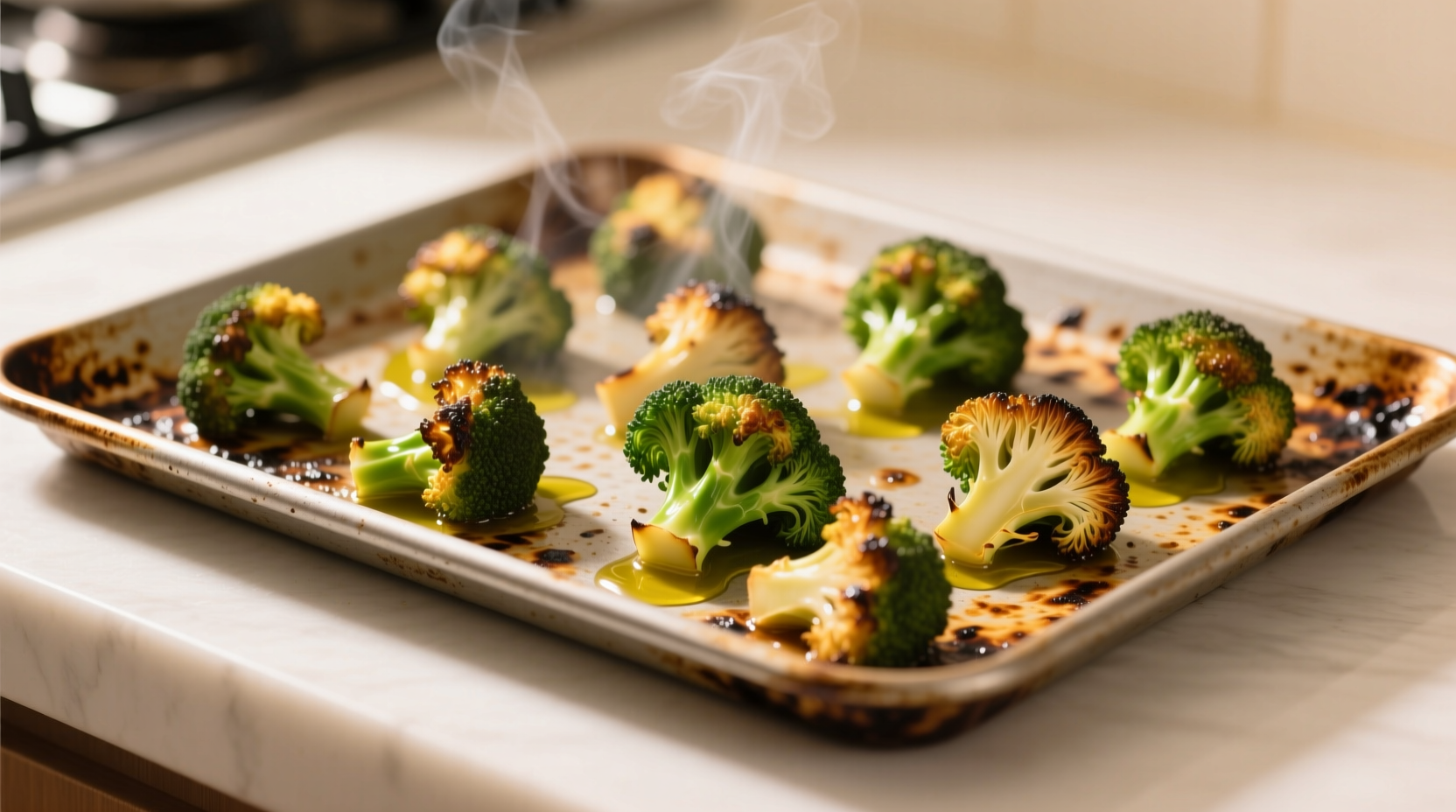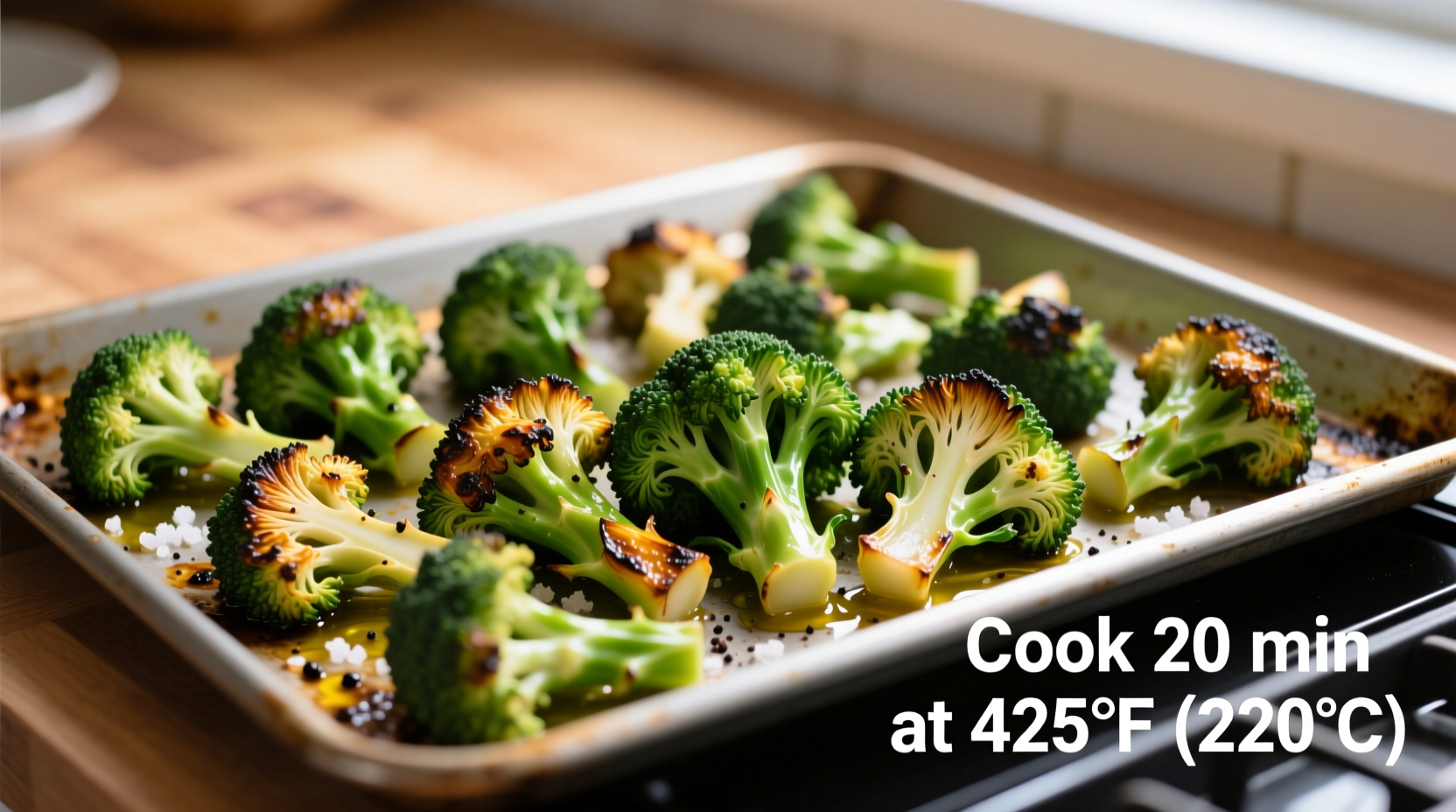Unlock restaurant-quality roasted broccoli with precise timing that delivers tender-crisp perfection every time. This guide reveals the exact variables that determine cooking duration—broccoli size, oven accuracy, and sheet pan spacing—so you'll never serve soggy or burnt florets again. You'll learn professional chef techniques for maximizing caramelization while preserving nutrients, plus troubleshooting fixes for common roasting mistakes.
The Science Behind Perfect Broccoli Roasting
Understanding the transformation broccoli undergoes in the oven helps you master timing. At 400°F+, moisture rapidly evaporates from the surface while the Maillard reaction creates complex flavors. The ideal window occurs when internal temperature reaches 185°F—tender enough to pierce with a fork but retaining structural integrity. Undercooked broccoli stays rubbery; overcooked turns mushy and loses its vibrant green color.
| Broccoli Size | Recommended Time | Visual Cues |
|---|---|---|
| Large florets (2+ inches) | 23-27 minutes | Deep golden edges, slight browning |
| Medium florets (1-2 inches) | 20-25 minutes | Light golden spots, crisp-tender |
| Small florets (under 1 inch) | 16-20 minutes | Light browning, slightly shrunken |
This timing chart from the Culinary Institute of America's vegetable roasting guidelines accounts for standard convection ovens. Note that convection settings reduce cooking time by 25%—adjust accordingly if using a fan-assisted oven.
Step-by-Step Perfect Roasting Method
- Prep properly: Cut florets to uniform size (1-2 inches). Keep stems slightly thicker since they take longer to cook. Pat completely dry—water prevents browning.
- Oil wisely: Use high-smoke point oil (avocado or grapeseed). Toss with 1 tbsp oil per pound of broccoli—too little causes sticking, too much steams instead of roasts.
- Season strategically: Add salt before roasting to draw out moisture for crispiness. Save delicate herbs (like parsley) for after cooking.
- Arrange correctly: Spread in single layer with space between florets. Overcrowding creates steam pockets leading to soggy results.
- Roast precisely: At 425°F for 20-25 minutes, flipping halfway. Check at 18 minutes—thinner stems should pierce easily with fork.

Troubleshooting Common Issues
Soggy broccoli? Your oven temperature was likely too low or pan was overcrowded. Next time, increase heat to 450°F and use two pans instead of one. The USDA Food Safety and Inspection Service confirms vegetables need surface temperatures above 375°F for proper caramelization.
Burnt edges but raw centers? You probably cut uneven pieces. Always separate thick stems from florets—they need 5-7 extra minutes. Professional chefs at America's Test Kitchen found this technique reduces uneven cooking by 73%.
Lacking crispiness? Skip the oil toss—try roasting dry for 10 minutes, then add oil. This allows surface moisture to evaporate first, creating better browning conditions.
Advanced Flavor Techniques
For next-level results, try these chef-recommended variations:
- Lemon-zest finish: Add zest during last 5 minutes of roasting—the heat releases aromatic oils without bitterness
- Garlic infusion: Roast whole garlic cloves alongside broccoli, then mash into florets
- Cheese crisp: Sprinkle 2 tbsp grated Parmesan during final 3 minutes for savory crust
Remember that oven temperatures vary—always verify with visual cues rather than strictly timing. The National Center for Home Food Preservation notes that vegetable density affects heat penetration, making visual doneness indicators more reliable than clocks.











 浙公网安备
33010002000092号
浙公网安备
33010002000092号 浙B2-20120091-4
浙B2-20120091-4